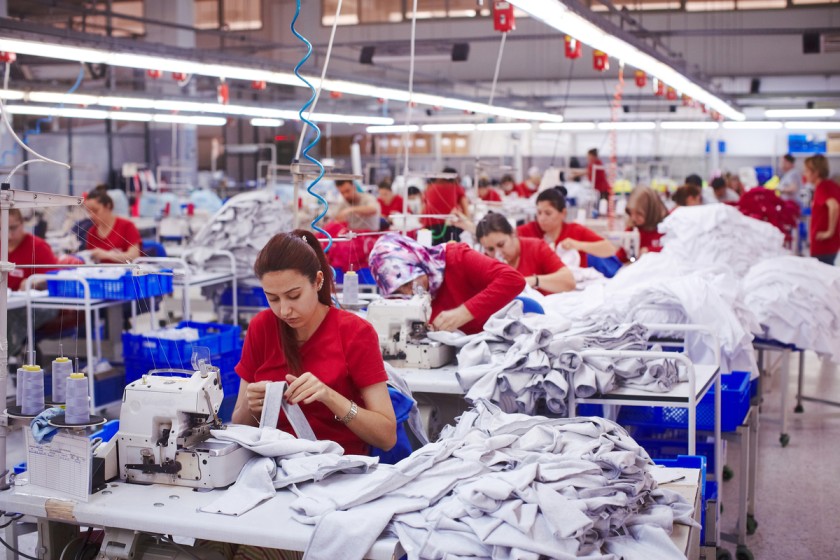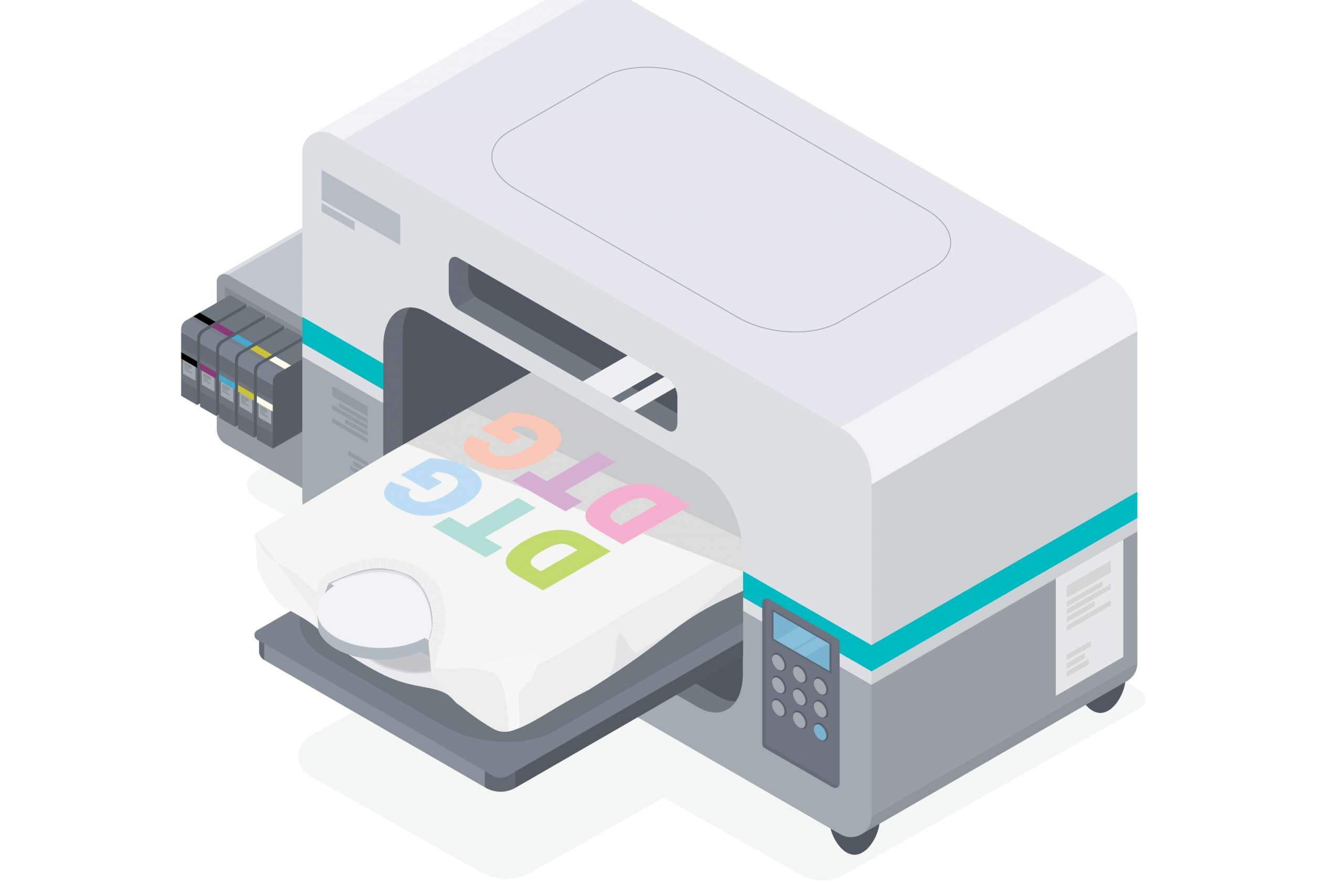Damask vs. Brocade, Which Is Better?

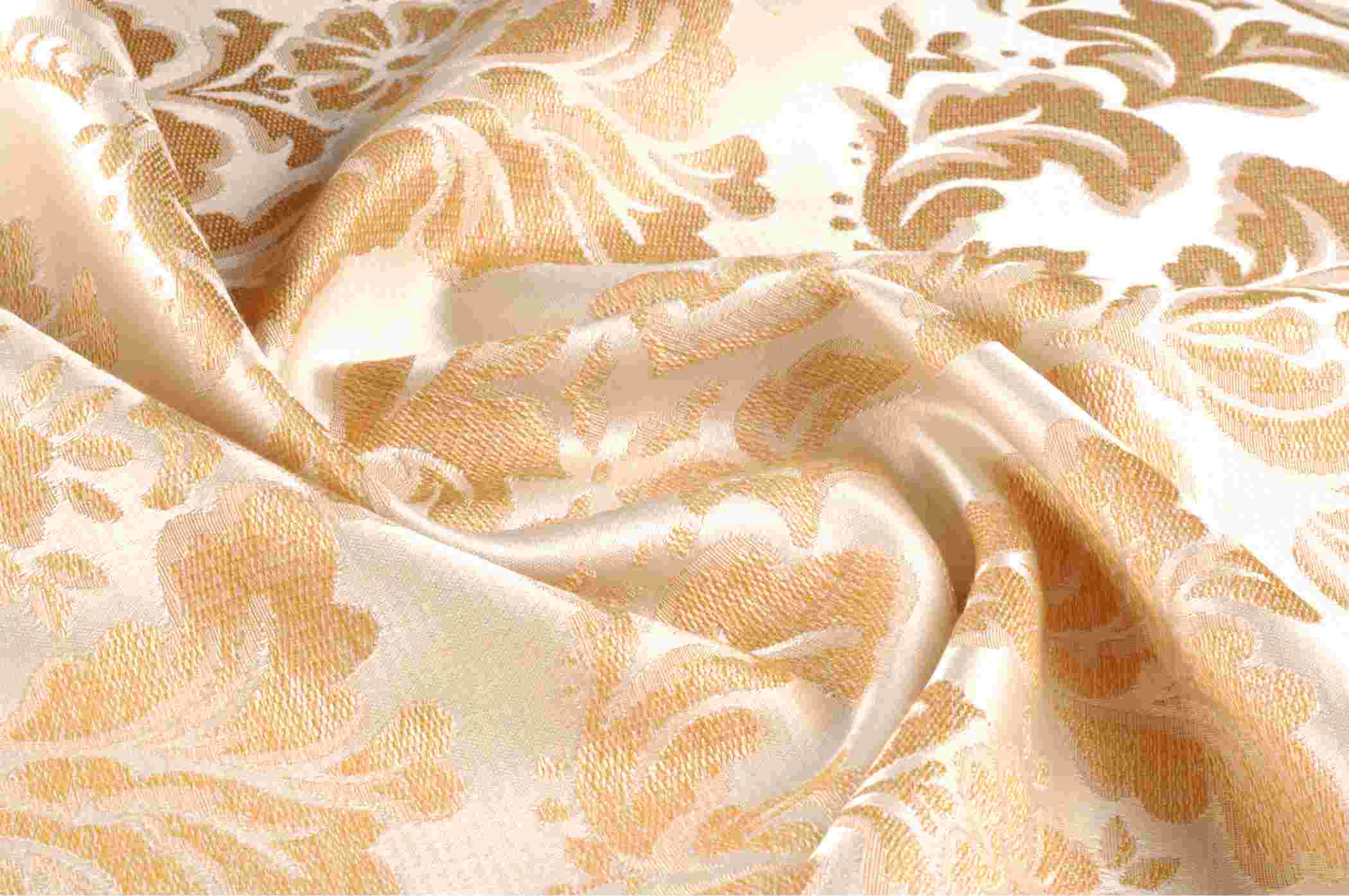

Damask and brocade are often confused because of the similarity between the prints and the feel of the fabrics. They are almost lookalikes. Damask fabric is often compared to the Brocade material, which is quite similar in pattern but expensive, and the gold threads of the fabric are unmatchable to the Damask prints. If you wonder why and how Brocade material is different from the Damask, read on!
Origin:
Damask fabric originated from the native country of Damascus, where it picks its name from. This city was an active trading port during the silk route and thus dates back to almost 300 B.C. the weaving technique soon grew in popularity during the middle ages.
The ancient city of Banaras in India is famous for various Brocade fabrics such as the Katan & Banarasi weaves. The “zari” is the intricate weaving of gold and silver threads into the fabric to create designs mostly adorned by the Kings and Queens of ancient India.
Look:
Damask is from the family of cotton fabrics that are woven on a jacquard loom. It has all the qualities of cotton fabric. The only difference is the loom and the pattern. Cotton threads are intertwined with lustered yarns for an embossed effect of prints. The Damask prints are often contrasting and essentially made with satin threads for a smooth feel. The end product is a reversible regal fabric material and so versatile to use.
Brocade material is woven on a similar jacquard loom, but it is non-reversible and the threads chosen are metallic silver or gold. The created pattern looks exquisite. The traditional brocade used gold and silver motifs on a silk fabric which is now replaced by various other fabrics such as cotton or polyester. This creates a pattern on only one side, so the backside looks like loose threads.
Feel:
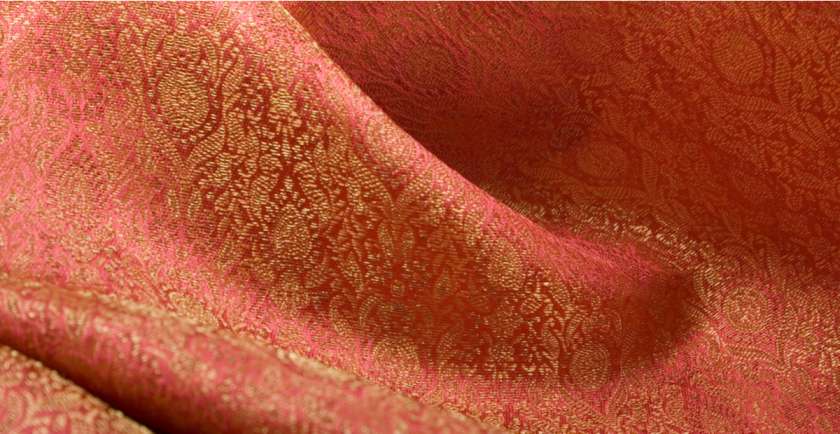
Damask prints project a royal effect if used for curtains, bedsheets, and other home linen. Damask fabric patterns are made with tone-on-tone patterns created by elaborate floral, geometric, and multicolored designs. The specialty of Damask prints is that the background colors and pattern colors reverse from front to back. The texture of Damask fabric is way smoother and more refined than the brocade because of satin threads. Brocade fabric has a touch of roughness as the motifs can literally be felt like they are embossed.
The design uses a satin weave, and the background is made using a plain twill. It is woven by using only a single warp and weft thread. This creates numerous possibilities of creating a single or multicolored pattern.
Texture:
A Brocade fabric dress has much more elegance and bounce than the damask fabric. The splendor of brocade material is incomparable. Brocade is much stiffer & rough, whereas Damask is smooth as satin.
There are 11 different types of brocade materials available: silk brocade, velvet brocade, wool brocade, synthetic brocade, satin, cotton, himru, zari, etc. Today the largest producer of brocade fabric is China & Australia, followed by India, France, and Italy.
Damask is weaved in double or single colors with contrasting prints.
Utility:
A few not-to-miss characteristics of Damask fabric are the well-defined weaved patterns with generous floral networks, a heavy and thick fabric owing to the weave with several layers of threads, making it a durable and strong fabric. The pattern is reversible with lustered weaves.
Because Damask fabric is woven in cotton, it is a comfortable fabric to wear with a great fall. When the same is woven in silk or synthetic fabrics, it increases the fall of the drapery and the sheen. Damask is exceptionally durable and thus finds its place in most home linen, such as upholstery and sofa fabrics.
Damask material can be used for table linens such as table mats, table napkins, runners, etc. Damask Prints are favored as jackets and other structured silhouettes.
Damask is also gaining popularity in bags and scarves as the dense fabric creates a rich and appealing look.
Care:
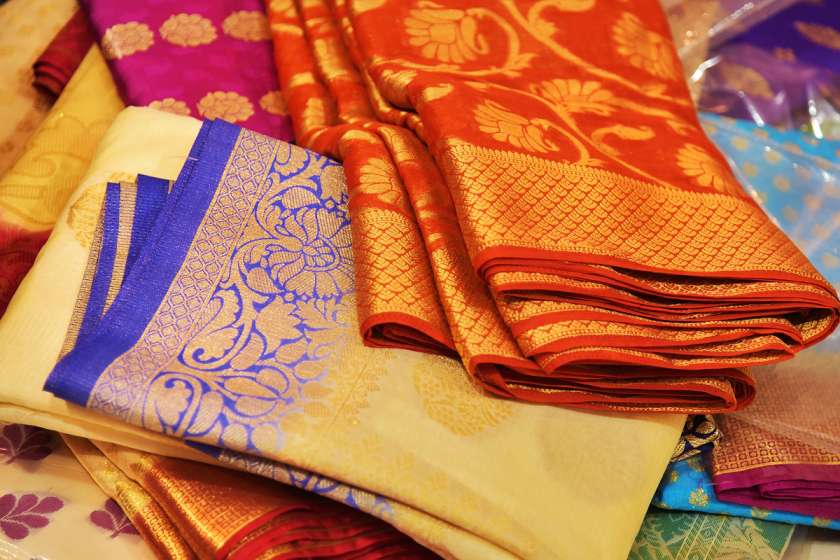
Brocade fabrics are gentle and require careful handling, especially during washing. The best way is to dry clean the material. Brocade is sensitive to heat & humidity. A high humidity environment can rust the gold and silver threads in the weave. In the same way, heat can cause the withering of the thread. Too much stretch during the fitting of upholstery can also pull the threads & cause damage. A major threat to brocade material is from pests. Silverfish can eat up brocade silk. If you see any signs of sawdust near your furnishings, get it treated immediately.
To conclude, brocade maintenance is definitely not as easy compared to Damask, which has low-cost upkeep. Damask prints are flexible, too, whereas the brocade material is much more rich and elegant. Brocade is used in bridal attires for both groom and the bride. Brocade and Damask can be alternatively used; based on what exactly you need. Whether it is for home decor or fashion attire and both would do a great job. If you are looking for a cheap alternative, then Damask can suffice your needs & can be a great substitute for Brocade. Check out the options and styles for Damask and Brocade on Fashinza.
















